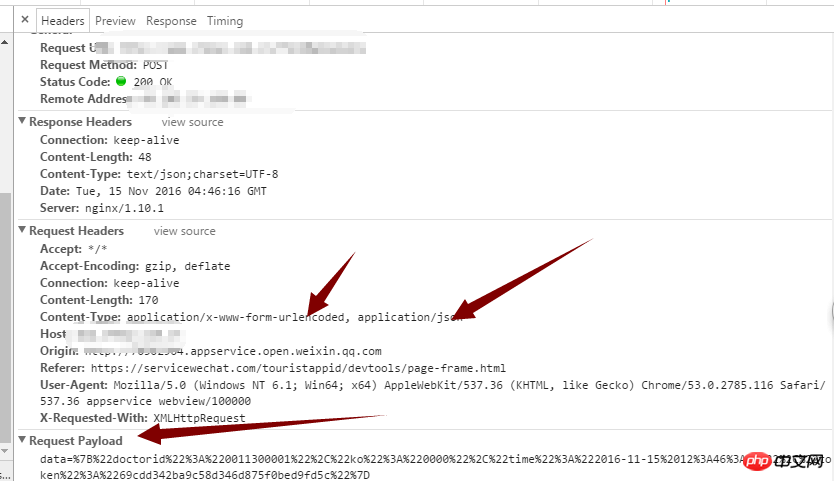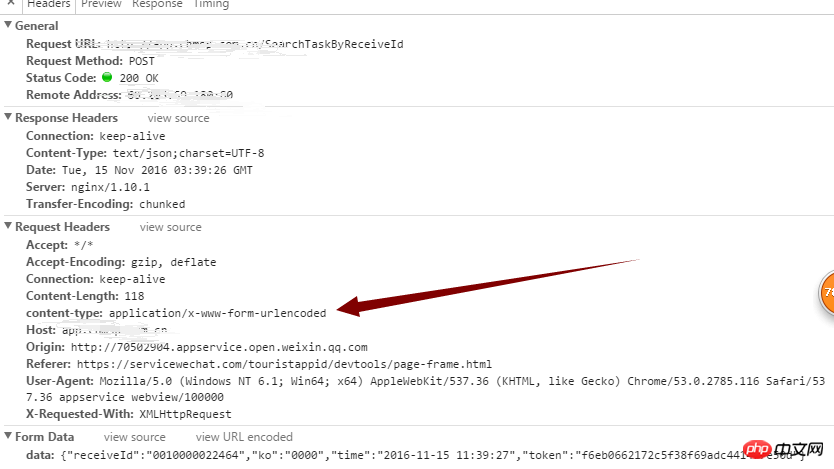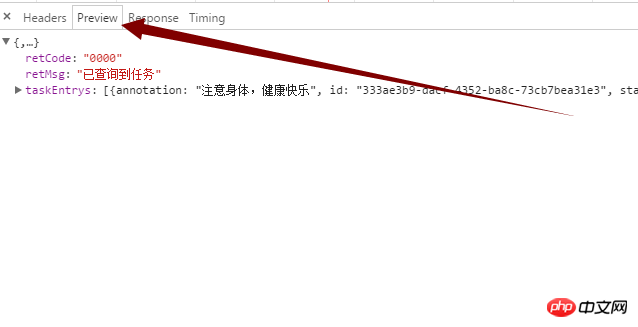
This article mainly introduces relevant information about the encapsulation of mini program network requests. Has very good reference value. Let’s take a look at it with the editor.
I once wrote an article about pull-up loading and pull-up refresh of WeChat mini programs. Today I wrote about the encapsulation of network requests of mini programs.
Here we first declare a bug in the mini program document, which causes the server to fail to receive parameters when making requests
Sample code:
wx.request({
url: 'test.php', //仅为示例,并非真实的接口地址
data: {
x: '' ,
y: ''
},
header: {
'Content-Type': 'application/json'
},
success: function(res) {
console.log(res.data)
}
})Among them The Content-Type in the header should be lowercase content-type so that the server can receive the parameters. I have been struggling for a long time and it still doesn't work after changing the server. It turns out that this is the problem. The parameter is in the request payload and the server cannot receive it. After using the following conversion
function json2Form(json) {
var str = [];
for(var p in json){
str.push(encodeURIComponent(p) + "=" + encodeURIComponent(json[p]));
}
return str.join("&");
}
, it is ultimately considered to be a content-type problem. In the end, it was OK to change it to lowercase. I feel that WeChat, such an awesome team, made a very stupid mistake, which made me a developer tormented. Don’t tell me, let’s get into the code.
1, Http request class
import util from 'util.js';
/**
* url 请求地址
* success 成功的回调
* fail 失败的回调
*/
function _get( url, success, fail ) {
console.log( "------start---_get----" );
wx.request( {
url: url,
header: {
// 'Content-Type': 'application/json'
},
success: function( res ) {
success( res );
},
fail: function( res ) {
fail( res );
}
});
console.log( "----end-----_get----" );
}
/**
* url 请求地址
* success 成功的回调
* fail 失败的回调
*/
function _post_from(url,data, success, fail ) {
console.log( "----_post--start-------" );
wx.request( {
url: url,
header: {
'content-type': 'application/x-www-form-urlencoded',
},
method:'POST',
data:{data: data},
success: function( res ) {
success( res );
},
fail: function( res ) {
fail( res );
}
});
console.log( "----end-----_get----" );
}
/**
* url 请求地址
* success 成功的回调
* fail 失败的回调
*/
function _post_json(url,data, success, fail ) {
console.log( "----_post--start-------" );
wx.request( {
url: url,
header: {
'content-type': 'application/json',
},
method:'POST',
data:data,
success: function( res ) {
success( res );
},
fail: function( res ) {
fail( res );
}
});
console.log( "----end----_post-----" );
}
module.exports = {
_get: _get,
_post:_post,
_post_json:_post_json
}2, test case
2.1 get request
//GET方式
let map = new Map();
map.set( 'receiveId', '0010000022464' );
let d = json_util.mapToJson( util.tokenAndKo( map ) );
console.log( d );
var url1 = api.getBaseUrl() + 'SearchTaskByReceiveId?data='+d;
network_util._get( url1,d,
function( res ) {
console.log( res );
that.setData({
taskEntrys:res.data.taskEntrys
});
}, function( res ) {
console.log( res );
});2.2 POST request
//Post方式
let map = new Map();
map.set( 'receiveId', '0010000022464' );
let d = json_util.mapToJson( util.tokenAndKo( map ) );
console.log( d );
var url1 = api.getBaseUrl() + 'SearchTaskByReceiveId';
network_util._post( url1,d,
function( res ) {
console.log( res );
that.setData({
taskEntrys:res.data.taskEntrys
});
}, function( res ) {
console.log( res );
});
Effect

The above is the detailed content of Code example of WeChat applet encapsulating http request class. For more information, please follow other related articles on the PHP Chinese website!
 What to do if the installation system cannot find the hard disk
What to do if the installation system cannot find the hard disk
 Which brand does OnePlus mobile phone belong to?
Which brand does OnePlus mobile phone belong to?
 How to retain the number of decimal places in C++
How to retain the number of decimal places in C++
 mysql backup data method
mysql backup data method
 How to set up computer virtual memory
How to set up computer virtual memory
 Is wifi signal amplifier useful?
Is wifi signal amplifier useful?
 Three ways to end a thread in java
Three ways to end a thread in java
 What are the data types?
What are the data types?




